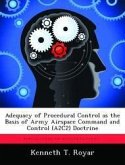The last 10 years of conflict have seen a dramatic increase of airspace users above the battlefield providing both opportunities and challenges to maneuver commanders. Assets operating overhead assist the commander in mission command; however, the additional airspace users also pose challenges to the maneuver commander's ability to employ organic surface fires. The primary research question this thesis seeks to answer is, "Does doctrine provide adequate guidance for maneuver brigade commanders to enter into the airspace discussion with the Joint Force Commander?" This study evaluates current joint and service airspace doctrine to assess information and procedural gaps that might limit the brigade commander's ability to effectively employ organic surface fires. Two findings are highlighted: at the brigade commander level there is a limited understanding of the airspace requirements needed to ensure effective employment of organic fire support assets; and joint and service airspace doctrine requires refinement. This thesis concludes that implementing a coordinating altitude between 10,000 and 12,500 feet above ground level gives the maneuver brigade commander maximum flexibility to employ organic surface fires.
Hinweis: Dieser Artikel kann nur an eine deutsche Lieferadresse ausgeliefert werden.
Hinweis: Dieser Artikel kann nur an eine deutsche Lieferadresse ausgeliefert werden.








